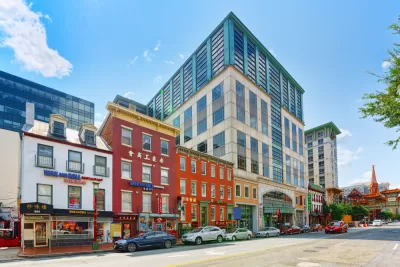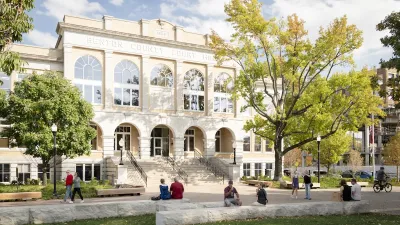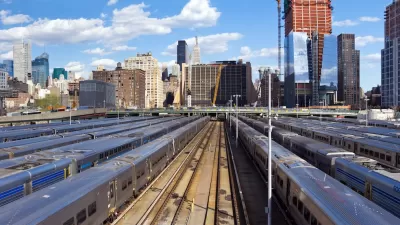A series of articles traces the history and policies behind Washington, D.C.’s efforts to promote equitable transit-oriented development.

In one part of a Greater Greater Washington series that explores the history of transit-oriented development (TOD) in the Washington, D.C. region, George Kevin Jordan outlines the ways that TOD can perpetuate existing inequities. “Today, with unaffordability and displacement in many cities at a crisis level, policymakers and activists are wondering how to ensure the benefits of TOD are more equitably distributed.”
Jordan points to changes that occurred under the administration of Mayor Anthony Williams, who took office in 1999 and “was laser-focused on bringing the city back to its former glory by building back trust, stability, and reliability within government.” As part of his plan, Williams strove to bring real estate investors back to the District and build better transit. “The District’s transformation into an in-demand city had ripple effects on many different types of growth in the region, including transit-oriented development.”
As walkable, transit-oriented neighborhoods became more desirable, housing costs rose and older residents were pushed out. “Between 2000 and 2013, about 40 percent of the city’s lower-income neighborhoods experienced gentrification, according to a 2019 study by the National Community Reinvestment Coalition.” The same report claims that more than 20,000 Black residents were displaced during that time. “Meanwhile, not only were residents living East of the Anacostia River not seeing much TOD, they were also dealing with disproportionate social and economic issues,” creating “an uneven set of opportunities for families and businesses.”
The next article in the series will highlight Arlington, “one of the pioneers in TOD, and how its success has complicated and informed the work to achieve equitable transit-oriented development.”
FULL STORY: Understanding why the region grapples with unequal access to TOD

Alabama: Trump Terminates Settlements for Black Communities Harmed By Raw Sewage
Trump deemed the landmark civil rights agreement “illegal DEI and environmental justice policy.”

Planetizen Federal Action Tracker
A weekly monitor of how Trump’s orders and actions are impacting planners and planning in America.

Why Should We Subsidize Public Transportation?
Many public transit agencies face financial stress due to rising costs, declining fare revenue, and declining subsidies. Transit advocates must provide a strong business case for increasing public transit funding.

Understanding Road Diets
An explainer from Momentum highlights the advantages of reducing vehicle lanes in favor of more bike, transit, and pedestrian infrastructure.

New California Law Regulates Warehouse Pollution
A new law tightens building and emissions regulations for large distribution warehouses to mitigate air pollution and traffic in surrounding communities.

Phoenix Announces Opening Date for Light Rail Extension
The South Central extension will connect South Phoenix to downtown and other major hubs starting on June 7.
Urban Design for Planners 1: Software Tools
This six-course series explores essential urban design concepts using open source software and equips planners with the tools they need to participate fully in the urban design process.
Planning for Universal Design
Learn the tools for implementing Universal Design in planning regulations.
Caltrans
Smith Gee Studio
Institute for Housing and Urban Development Studies (IHS)
City of Grandview
Harvard GSD Executive Education
Toledo-Lucas County Plan Commissions
Salt Lake City
NYU Wagner Graduate School of Public Service





























